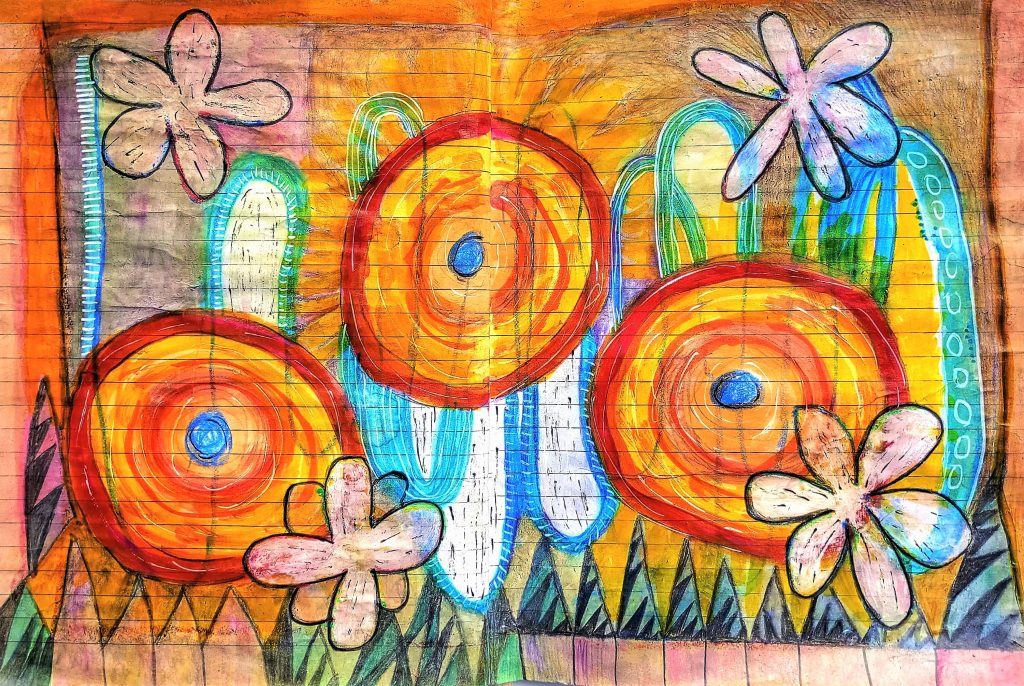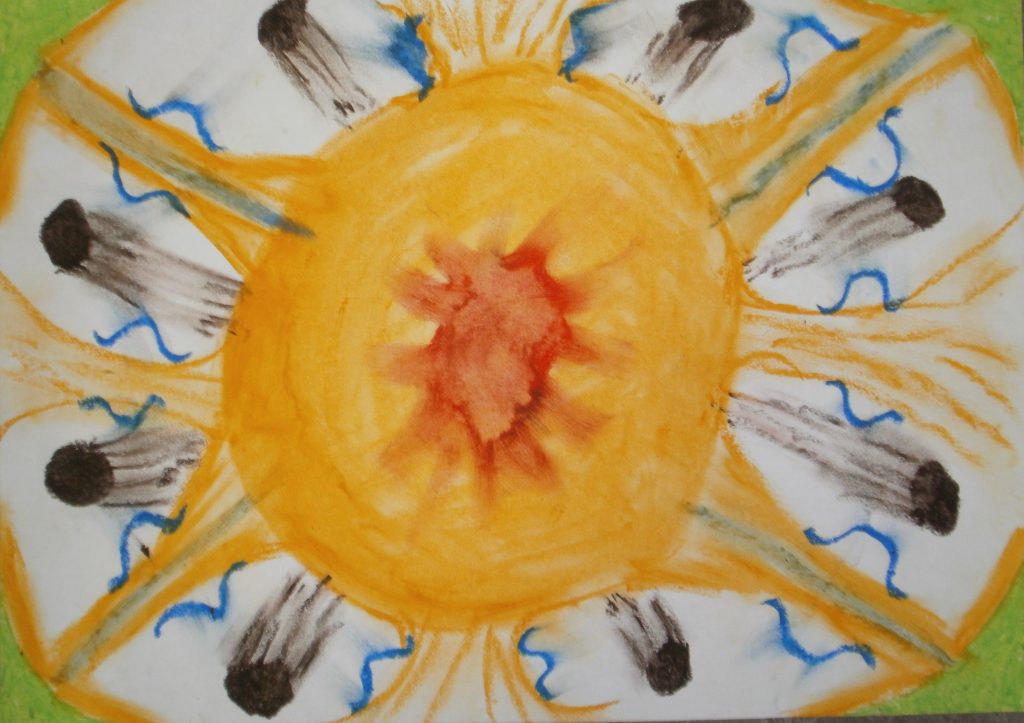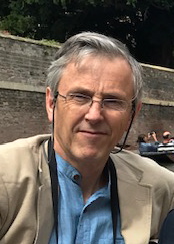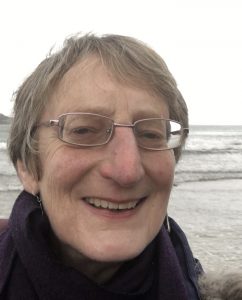Back to articles
24th May 2020
Palpable Existentialism. A Focusing-oriented Therapy
Greg Madison
Palpable Existentialism: A Focusing-oriented therapy
Greg Madison PhD
In a recent edition of this magazine (Psychotherapy in Australia, Vol. 19, No. 4, August 2013, p.72-80) an extract was published from Ann Weiser Cornell’s Focusing in Clinical Practice (Cornell, 2013). I want to carry on from that article and assume enough familiarity with Focusing (Gendlin 2003) in order to take the next step into ‘Focusing-oriented therapy’.
Cornell’s book offers a comprehensive introduction to Focusing for the clinician, offering examples of how Focusing as a method might be incorporated into sessions. Mostly this describes Focusing as a kind of stand-alone import. This illustrates the fact that there is still little written about how Focusing actually integrates with an existing orientation to psychotherapy and how that integration changes both how Focusing is practiced and how therapy is understood. In some sense this integration is more sophisticated but also more primary than Focusing itself.
What does Focusing-oriented mean?
Focusing is not a therapy. It can be described variously as a personal growth method or a spiritual practice, a philosophical or creative practice, a form of generative thinking or even a ‘way of being’. A Focusing-oriented therapy is usually not just guiding clients through a Focusing experience at some point during the therapy hour. That would be ‘the use of Focusing in therapy’, which Cornell’s text describes very clearly, or a guided Focusing session, which she has also described well (Cornell, 1996). A Focusing-oriented therapy is another step and involves therapeutic application of the wider experiential philosophy from which Focusing itself emerges. In this sense ‘Focusing-oriented’ is somewhat of a misnomer.
Exposure to the philosophy underlying Focusing can challenge how we understand living (Gendlin 1997a,b). If these new understandings are embodied through the therapist’s regular Focusing practice, they will influence how we understand living process and therefore how we work therapeutically. Two upcoming texts will, for the first time, illustrate a diverse range of international therapies that have developed as ‘Focusing-oriented’ (Theory and Practice of Focusing-oriented Psychotherapy and Emerging Practice in Focusing-oriented Psychotherapy. Greg Madison (Ed.),Jessica Kingsley Publishers, 2014).
‘Focusing-oriented’ therefore signifies the thorough integration of an experiential sensitivity and its accompanying philosophy with any ongoing therapeutic orientation. What is described below is based upon an integration of Eugene Gendlin’s work (Gendlin 1997a,b; Levin 1997) and existential psychotherapy. Hopefully it shows how the experiential emphasis of Focusing enhances existentialism and how the deconstructive and phenomenological spirit of existentialism transforms the potential of Focusing. Combining these orientations makes the practice different from what one finds in either orientation alone.
The experiential-existential level is primary
‘Palpable existentialism’ (Madison & Gendlin 2011; Madison 2010) is the practice of crossing Eugene Gendlin’s ‘Philosophy of the Implicit’, including Focusing practice, with the basic tenants of the British School of Existential-phenomenological psychotherapy (van Deurzen & Arnold-Baker 2005; Spinelli 2007) . A hallmark of this integration is its intention to work from what is revealed in the real relationship between therapist and client, as heralded by existential therapists (Spinelli 2007) and made palpable by some Focusing-oriented therapists (Madison 2010, 2014a; Preston, 2014).
The body is the doorway to the palpable ‘self’ underneath concepts and the opening onto its continuity with the vastness beyond (Gendlin 1964). From this view each individual (therapist as well as client) is an opening, not only onto himself or herself, but also onto the unfinished process of existence. In therapy we often try to understand what appears in that opening; usually only the self that appears, not the vastness.
Both existential and experiential approaches encourage us to pause our usual living so that the weight of cultural and conceptual assumptions do not smother the novelty that might emerge from paying attention to the moment-by-moment idiosyncrasy of any individual’s experiencing. In order to understand ‘the person inside’ we must get beyond the camouflage of belief and assumptions. But can we form a therapy from a basic openness like that?
Every year we add a handful of new acronyms to the plethora of theories and techniques swaddling contemporary psychotherapy. Whilst not wishing to undermine what each new approach highlights, I am concerned that what I say below could in fact be concretised into just another approach with a catchy abbreviation. My intention is to be guided by what is intuitively familiar to many experienced practitioners: the implicit process underneath the various approaches emerging today.
It sounds arrogant to say that the mode of therapy I am presenting is ‘underneath’. Like I am claiming it’s more profound. Let me be clear – the experiencing level I describe is ‘less than’ a therapeutic skill; it is the fundamental experiencing that makes us human. According to Gendlin’s philosophy, bodily experiencing makes it possible for us to function, walk across a room, hold a conversation, think, imagine, create, and it is what makes human change possible (Gendlin 1997a,b). It is a meta-level, primary. Other approaches assume it and build on it in many useful ways.
However, an experiential-existential integration maintains its continuity with the experiential ground that gives rise to any model (including its own). It welcomes the vast expanse of human existence that eludes knowledge and explanation. This orientation is probably very unfashionable, so I will have to advocate for it. Compared to other practices it holds in abeyance, rather than adds to, theoretical predictions or ‘knowledge’. I will have to appeal to what you directly know from your own felt experience of sitting many hours with clients in order to convince you that insubstantial is vital – vital but perhaps not always sufficient.
An insubstantial model
In order to be ‘evidence-based’, therapies must now be uniform enough to be ‘administered consistently’, ‘manualised’; therapy is treated as a prescription, a standard dose for any patient. The therapy room has become another medical intervention. These approaches have a comforting robustness. Useful manuals have arisen for how to respond to each pattern of client behaviour. But no client is just a pattern and no therapist is consistent even with him or herself, let alone with any specific ‘treatment’, school of thought, or any manual of how session number five should proceed.
Intuitively we know that every therapist is his or her own ‘integration’. Our whole living process, much more than we could ever say about life, is the foundation out of which we understand people and practice therapy. In this sense there is no such thing as a ‘focusing’ therapist, an ‘existential’ therapist, a ‘person-centred’ or ‘psychoanalytic’ therapist, as if knowledge of a particular theory could wipe out our living experience and become a new foundation for being. Every moment shapes us by evoking a response; the world rouses and elaborates us, affecting how we live in the next instant and how we respond to the world as it further affects us.
(‘Exhilarating Pessimism’, Madison, 2014a, pp.145-164)
Contemporary psychotherapies that are endorsed as ‘valid’ might obscure how much we don’t know, how flimsy and exposed we become without these claims to knowledge, especially when face to face with the unique dilemmas of a specific person. Often we keep our insecurities and foibles hidden behind our backs during sessions, giving the illusion that we know more about life than we possibly could.
We forget that like our clients we are also in the midst of living. There are times it would be convenient to conceal that we are all learning on the job. As a therapist I am motivated to appear ‘wise’, ‘sorted out’ and ‘living well’. Unfortunately, therapy treatments, techniques, credentials and degrees do not make me an expert on how to live. The client and I sit together, connected through our human vulnerability yet I am encouraged to make even this relating into a technique. We bolster our own security if we can construct theoretical explanations for the unpredictable vicissitudes of human interaction. But we know they are constructions. Theories and techniques land like a woodpile between the client and myself; something solid to hide our deepest insecurities from one another.
For over twenty-five years I have supervised and lectured in various cultures as a psychologist and psychotherapist, yet I must confess that rather than ‘knowledge’ about psychotherapy or the ‘wisdom’ of experience, I often still practice from not-knowing. I do not dispute the important place of experience and education, but I also see how often our textbook ideas fail; interpretation, reframing, mindfulness, existential challenge, Focusing, Socratic dialogue, and other techniques fail to help. I know how often I fail.
The universe vastly exceeds our maps of it. Humans are always more complicated than any scheme we bring to them. So it is not surprising that as therapists we have each had moments when our educated attempts to help have fallen flat, our reaching out has not touched the other. Our training, our techniques and scripts, have not done their job and we are left holding an empty bag looking blankly at our client who looks blankly back. When we feel we have nothing else to offer, out of desperation there is an opening to what was always there. It is basic, primary, and without stable form.
Palpable existentialism adds experience to existential therapy, and existence to the practice of focusing therapists. It imbues my living with the potential of experiential process and the pessimism of an existence where sometimes there is no way forward. Below I outline some of the ways in which each orientation transforms by crossing with the other.
The homelessness of process
Gendlin’s philosophy is a reminder that body is process (Gendlin 1997). When we come ‘home to the body’, as some people say, we do not find a home of substance. The body is not like a house. If home is security and stability then through the body we discover that at bottom we are homeless. As I have suggested elsewhere (Madison 2009) we become homeless not because we have been exiled from home, but rather because we have been exiled by home from the flow of the self. The coziness of the tranquillized ‘substantial’ distances us from the self that calls to be known as the elusive and ungraspable. Why do we build a home on top of the open underneath?
According to the existentialists, in the expanse we feel a deep sense of unease that has metaphysical origins and which experientially is a doorway to unfolding insight, ‘… we, human creatures, perceive dimly in the experience of the uncanny, that the world rests on nothing. It has no basis or ground’ (Gray 1951, p.116). Or as the philosopher Karl Jaspers says it, ‘The bottomless character of the world must become revealed to us, if we are to win through to the truth of the world’ (Jaspers 1932, Philosophie, p.469, c.f. Gray 1951, p.117).
The existentialist thinks it is therapeutic to perceive the reality of human existence without the spin of what we would like it to be. This intention corrects a subtle assumption in Focusing and Gendlin’s philosophy to see the body as carrying us ‘forward’ towards forever better possibilities.
Challenging optimism
‘Carrying forward’ is Gendlin’s term for the bodily process that occurs when what the body implies should happen actually does happen (see Gendlin 1997). When the experiential implying actually occurs, there is a bodily shift that is referred to as ‘positive’ and ‘life affirming’ (for example, Gendlin 1984). But this optimistic description does not take into account that the body propels itself towards what? Expanding openness, yes, but also its own aging, increasing fragility, and final demise.
Human being is a carrying forward to death, a ‘being-unto-death’ as Heidegger (1964) proclaimed. Carrying-forward has a feeling of ‘rightness’ due to a release of bodily tension, but it is no yellow brick road. On this topic Gendlin can be read as an optimist rather than as an existential philosopher. This would put him at odds with the British School’s balance between human givens, facticity, tragedy, and human potential (Spinelli 2007). Gendlin anticipates the criticism and says his view is not ‘sloppy optimism’. ‘With so much suffering and destructiveness all around us, optimism is an insult to those who suffer’ (Gendlin 1996, p.23).
Gendlin and his colleagues clarify that the energy of the forward movement ‘is not optimism or preference for the positive’ (Gendlin et.al 1984, p.272). The life energy that is released from ‘being-with’ any experience is what is valued, not some preference for ‘positive’ and ‘optimism’. But why then are these values associated with the bodily shift and so prevalent in the Focusing world? A description that sounds pessimistic is no less valid if it resonates with life experiencing. Resonating, that flow of energy, is the key. The positive bias obscures the existential context.
Existential-phenomenological therapy values the intention to confront existence as clearly as we can, given our capabilities at any given time. It is an attempt to value what is ‘true’ over what is ‘life affirming’ in conventional terms of happy, adjusted, and comfortable. We are taught that our goals are achievable but not to question what the purpose of achieving them would be, given the whole context of a human life.
The existential does not override the experiential; they go back and forth between grounding and symbolizing, informing and refining each other. In experiential-existential therapy the point is that the therapist must be willing to enter the unknowing flow of experiencing and acknowledge the realities it momentarily reveals. If we converge the experiential and existential we can create a practice within which existence and experience can be taken as one. Moments of existential insight are simultaneously valid for both client and therapist.
Challenging the conceptual in existential therapy
Anything existential that is not experientially given remains theoretical conjecture (including what I’ve said here), no different from any other dogma or therapeutic creed.
It is ironic that philosophies about embodiment can engage our intellect only. Since the 1950s, Gendlin’s writings have run parallel to the existential-phenomenological tradition, having much in common with Dilthey, Husserl, Heidegger, and Merleau-Ponty. Existential therapists read these pivotal philosophers’ ideas about the body but without a practice that points back to the body these insights remain conceptual. We have body philosophies but how do we actually dwell with our bodily being? Where do these philosophies come from if not from the body, yet we rarely go back to this implicit source itself.
According to Gendlin (1966) experience is not definable by concepts, rather, concepts get their definitions from bodily steps of experiencing. If we use theory (or concepts or philosophy) experientially, concepts become ‘the ‘epiphenomena’, pointers whose sole meaning consists of the experiential texture at which they point’ (p.207).
Palpable existentialism relies upon our own experience, as it is concretely felt in our bodies. It does not rely upon you first understanding Sartre, Heidegger, Merleau-Ponty and then applying these philosophies to your life and your work with clients. It relies upon the primacy of connecting with your own experiencing process. Then you can read those authors and others, with explicit attention to your body, constantly asking yourself – does this ring true for me? If we try to live within existential philosophy we remain students of the ‘existential tradition’ but not existentialists. To be an existential psychotherapist means, from this view, to be experiential. Existentialism is palpable.
Focusing is phenomenology
Gendlin is careful not to set himself up as another expert; he wants his philosophy to point us back to ourselves. His message is empirical and not another doctrine. The intention is to help break the hegemony of received meanings so that the source of thinking can be found. The experiential process follows the basics of phenomenology as it is applied to psychotherapy (see Spinelli 2007). The process is descriptive rather than interpretive, it brackets preconceptions and it treats all aspects of the phenomenon equally, i.e. there is no such thing as resistance.
In this way Gendlin is doing a kind of phenomenology that keeps returning back to experience after it formulates something from experience. He was discovering that there is a kind of unformulated experience that can be pointed to – an experience that is not itself just another formulation but implicitly includes everything that we have previously formulated and lived. There is something coming freshly that is more than fixed content and symbols (something that is not itself a ‘thing’, see Madison & Gendlin 2011).
From this view, existence is equated with experiencing. It is not a set thing, not a snapshot that could ever be described. It is a movie, but a movie that responds and changes in the very viewing of it.
Feeling the experiential-existential relationship
In therapy we add the therapist as a person for the client to meet. The situation is already more like the difficult everyday world where we have problems interacting with other people. The likelihood is that between therapist and client we will experience some of the trouble we both usually have in the rest of our lives.
When I sit with my client, I am a new manifestation because I am here with this person. A therapist who tries to adhere too much to a method deprives their clients of being accessible, leaving gaps where another real person should be. We need to be self-aware, not neutral. An ‘absent’ person has less to offer therapeutically. Professional knowledge and skill is first embodied within the person of the therapist and arises directly from that person when the interaction calls it forth, not when a treatment agenda prescribes it. This is an attempt to practice without letting ‘knowing’ get in the way of ‘meeting’.
The therapist’s feeling response to the client must be genuinely available in order for the client to respond further. How it is available or disclosed is an important question but it should not be artificially kept away from the client at the moment when the client needs a responsive environment in order to reconstitute his own life processing.
According to Gendlin,
We know best with children that this is a personality development process. … such a relationship requires that the therapist’s feelings be expressed as clearly his own, and the child’s as clearly the child’s own. To protect another’s freedom we do not need to paralyze ourselves. That would give him only a useless emptiness instead of a full relationship in which he is free. We need to express our feeling reactions and then still let him be free—by virtue of the fact that these reactions are our own. They don’t preempt his. We point again and again at his, ask about them, make room for them, refer to them—even at a time when, perhaps, he remains totally silent and neither expresses anything of his own feeling life, nor has it at all clearly (1966, p.242).
The therapeutic relationship is of two real humans living in close proximity. We look at each other (or not). We see our look taken in and reflected back. The room resonates with meaning before a word is spoken, even before ‘the look’. The look already arose from the interactive process that makes us who we become when we are together. Such ‘existential communication’ remains a crucial influence on what happens next, it is the medium of the session.
Some Focusing-oriented therapists, influenced by the respectful non-directive intention of person-centred trainings, are not inclined to emphasise the relationship with explicit interventions. The existential Focusing-oriented therapist is more likely to verbalise some of the process of relating, to make it a part of the content of sessions so it is lived symbolically as well as experientially. Although this is an instance of the back and forth from experience to words that Gendlin highlights in his philosophy and in the Focusing method, it is uniquely existential to invite dialogue about the moment-by-moment felt relating as it happens in sessions.
Experiential-existential therapy invites another person close while we sense deeper. That person gets into our sensing so that they become the ‘toward’ that our living can relate to. They witness, receive, and most importantly they give us a response towards which we can sense and respond more. As therapists we want to feel through the assumptions, beliefs, conventions, to the fundamental humanity in our client in order to reveal to them how their humanity affects us.
The experiential-existential therapist senses for the kind of interaction that encourages the client to begin to live from the unknown within. Culture does many valuable things but it does not operate in the sphere of the unique human process. If therapy works, the client becomes more marginal to their culture, not more ‘adaptive’ in some simple form-fitting way. The client returns to their daily world where they try to fulfill what is expected of them. But the client has now opened up to more than the cultural expectations and has a desire to take steps towards a deeper rightness than culture alone provides.
Inch-by-Inch people free themselves a little from responding automatically from the implicit messages they learned from their cultures. The therapist offers him or herself as the receptive environment within which the client learns to live forward, in new ways.
If we are experientially present, clients learn to bring their awareness to what was labeled ‘not-me’, or driven into oblivion because it was ‘negative’ or ‘pessimistic’ and made others feel uncomfortable. It is deeply healing when the therapist celebrates the return of what culture said could only be repugnant to others. It is even more healing when the therapist says ‘me too’ implicitly, ‘through this we belong with each other’.
Manualised therapies help clients to behave appropriately in the office and to pay their bills, but how sad to think our job is only to revitalise that robot of the conventional in the consulting room. Can we risk a subversive psychotherapy that is grounded through intricate experience itself? Our common humanity is palpable. It is not based upon shared knowledge or imposed routines. Our commonality is the living process ‘between’. We understand each other because we are the same process ‘source’.
A brief clinical example
Some years ago I developed a psychotherapy department in a large inner city hospital. Our practice was consistent with the experiential-existential approach described above. One Friday afternoon I received a referral from the neuroscience nurses to meet Mr. Young, a middle-aged patient who was creating a disturbance on the ward. When I arrived at the nurse’s desk the ward sister warned me that Mr. Young had been difficult and demanding since his admittance a week before. Today he had become even more agitated while waiting for transport back to his local hospital where he would soon be discharged home. To die.
I could see a large man standing halfway down the corridor, watching me with suspicion. I approached him, introduced myself, and asked if he would like to step into the day room where we could have some privacy. Before I had even sat down Mr. Young began to describe his experience at the hospital, being ignored by nursing staff, and worse, the disrespectful treatment by the consultants, … ‘If I had met any of those men a week ago, in my club or in my office, they would have treated me with respect, as an equal. Here, because I’m wearing one of these (he picks at his hospital gown) I’m nobody. You would not believe how they told me about my scan results!’
Mr. Young was visibly shaking as he spoke. His face was contorted and red with rage. I was sitting back in my chair, constantly grounding myself, feeling my body, but unfortunately not knowing what to say. All I could manage was, ‘You have had an awful experience here and it’s clear you are very angry about it’.
I seem to have added to Mr. Young’s rage. He ignored my comment and looked hard at me, ‘A week ago I was having breakfast with my wife. The last thing I remember was seeing the paramedics walk past my dining room window. Then I woke up two days later in this place. Now they tell me, like they are talking to a dog, that I have an inoperable brain tumor and at most I have three months to live. How would you feel? HOW WOULD YOU FEEL?’
He dragged me out into reality; far beyond any professional response. I could have acknowledged his rage, or said ‘no one can know what it is like for you’. I could have patronized him with messages like ‘how difficult’ etc etc. But this man was desperate to be met as a real person and I could not hide from his claim on me in that moment. We stared at each other while I paused to take his question seriously. Suddenly I could feel the panic and hopelessness inside of me as I imagined being in this man’s situation. I answered evenly, ‘I would be devastated.’ Immediately there were tears in his eyes and then in my eyes. This intimidating millionaire and I had met.
We stayed there on the edge of emotional collapse; our bodies inclined forward, eyes fixed on each other. He described how a month before he had bought his own private airplane to celebrate the beginning of his retirement. He and his wife had planned a year of travel. Then, entirely out of the blue, he had collapsed and now he was here, about to return home with a death sentence. I listened with my body, taking it all in experientially, as much as I could, shaking my head. ‘It is so hard to take this in’ ‘I feel sick’ ‘How can this be true?’ Who said what?
I felt no urge to contradict the bleak outlook with something positive. What happened to Mr. Young could happen to me – this is the human shock we hide from. In order for him to recover from his shock I had to feel mine. I had to have it as real as possible. We spoke frankly. My job, if I had one, was to step back into my open body every time I tried to find an angle, an agenda, a closing-down, a side-road or a theoretical red herring. I felt responsible to stand up to existence by not putting anything in the way. But could I stand it?
After forty minutes the transport team knocked at the door to take Mr. Young away. We stood at the door, faced each other and shook hands firmly. ‘Thank you’ is all he said but I felt his appreciation resonate deeply. I left our meeting feeling vulnerable and weak. We never met again but I still remember Mr. Young. He must have died over ten years ago, yet I feel haunted by what I had to confront in myself so that he could regain his humanity. There was no ‘forward direction’ but there was a meeting and an expanding, briefly. I had allowed myself to be affected because he had demanded it. If we had more time, many other things might have happened. Other skills might have come into play, but only insofar as they resonated with Mr. Young, and not to obscure the abyss underneath.
Summary points
- Therapist interventions arise from the therapist’s ‘internal’ felt sense of what is alive experientially in the moment, not from theoretical postulates of what is important or even explicit indications from the client. Such an intervention can make explicit something that was, until then, inchoate ‘in the flow’; we speak in a way that expands the whole feeling of the session.
- But it is not exactly the feeling that we pay attention to, but the ‘knowing’ that is implied within the feeling. So, a ‘negative’ feeling can feel good when it is acknowledged not because we are affirming the ‘negative’ but because we are acknowledging the deeper ‘truth’ implied in the feeling.
- Our common humanity is palpable. It is not based upon shared knowledge or collected information. Our commonality is the living process ‘between’. We understand each other because we are the same process ‘source’.
- A philosophy of implicit experiencing gives us the concept of the ‘lived body’ as ongoing unfinished process, an insubstantial flow that can ground whatever we offer as therapists.
References
Cornell, Ann Weiser (1996) The power of focusing. Oakland CA: New Harbinger Press.
Cornell, Ann Weiser (2013) Focusing in clinical practice. The essence of change. New York: WW Norton and Co.
Gendlin, E.T. (1964). A theory of personality change. In P. Worchel & D. Byrne (eds.) Personality change. pp. 100-148. New York: John Wiley & Sons.
Gendlin, E.T. (1966). Existentialism and experiential psychotherapy. In C. Moustakas (Ed.), Existential child therapy, pp. 206-246. New York: Basic Books.
Gendlin, E.T. (1984). The obedience pattern. Studies in formative spirituality, 5(2), 189-202.
Gendlin, E.T., Grindler, D. & McGuire, M. (1984). Imagery, body, and space in focusing. In A.A. Sheikh (Ed.), Imagination and healing. pp. 259-286. Farmingdale, NY: Baywood
Gendlin, E.T. (1996). Focusing-oriented psychotherapy: A manual of the experiential method. New York: Guilford.
Gendlin, E.T. (1997a) A process model. New York: The Focusing Institute. Corrected version (2001) is available http://www.focusing.org/process.html.
Gendlin, ET (1997b) Experiencing and the creation of meaning. A philosophical and psychological approach to the subjective. Evanston Ill: Northw. U. Press.
Gendlin, E.T. (2003) Focusing. How to gain direct access to your body’s knowledge. London: Rider
Gray, Glen J (1951) The idea of death in existentialism. Journal of philosophy, 48 (5): 113-27
Heidegger, Martin (1964) Being and time. (Trans. J Stambaugh, 1996) New York: SUNY Press
Levin, David Michael (1997) Language beyond postmodernism. Saying and thinking in Gendlin’s philosophy.Evanston Ill: Northwestern U. Press.
Madison, Greg (2009) The end of belonging: Untold stories of leaving home and the psychology of globalization. Charleston SC: Createspace Publ.
Madison, Greg (2010) Focusing on existence: Five facets of an experiential-existential model. Person-Centred and experiential psychotherapies
Vol 9 (3): 189-204.
Madison, G & Gendlin, ET (2011). ‘Palpable Existentialism: An Interview with Eugene Gendlin.’ In Existential therapy. Legacy, vibrancy and dialogue. Barnett & Madison (Eds.)
Madison, Greg (Ed.) (2014a) Theory and practice of Focusing-oriented psychotherapy. Beyond the talking cure. London: Jessica Kingsley Publishers
Madison, Greg (Ed.) (2014b) Emerging practice in Focusing-oriented psychotherapy. Innovative theory and applications. London: Jessica Kingsley Publishers
Preston, Lynn (2104) The relational heart of Focusing oriented psychotherapy. Pp.127-144. In Focusing-oriented psychotherapy. Beyond the talking cure. Madison (Ed.) London: Jessica Kingsley Publications.
Spinelli, Ernesto. (2007). Practising existential psychotherapy: The relational world. London: Sage Publications.
van Deurzen, Emmy & Arnold-Baker, Claire. (2005). Existential Perspectives on Human Issues: A Handbook for Therapeutic Practice. Basingstoke, UK: Palgrave Macmillan.
Back to articles










